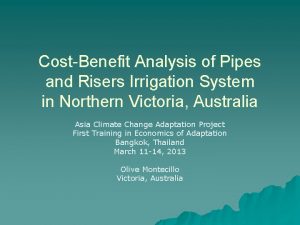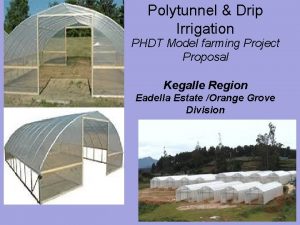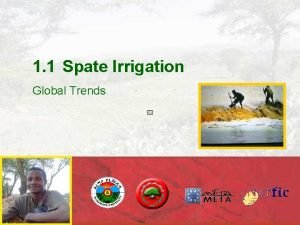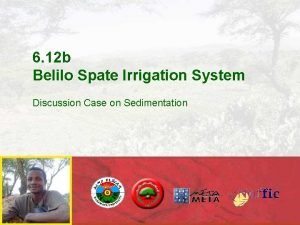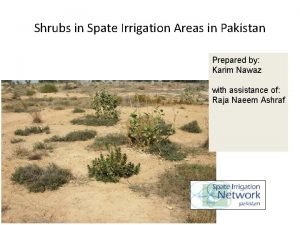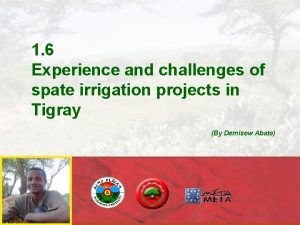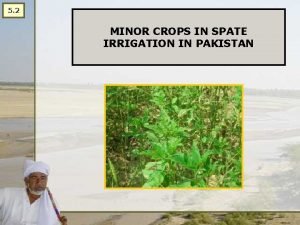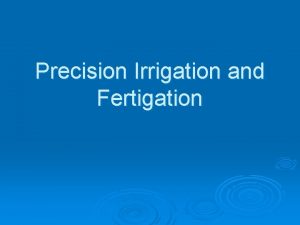1 2 Typology of spate irrigation systems Typology







- Slides: 7

1. 2 Typology of spate irrigation systems

Typology • • Size of the systems Type of infrastructure Type of operation and maintenance Source of water

Size of the systems Small From few hectares to 500 hectares Short duration floods On tributary streams in mountains Considerable slope Small intermontane aquifer sometimes Single farmer or single group Usually no interventions Gravel and stone deposits Medium Up to 3000 ha Well defined water rights Relatively short floods Coastal, inner basins and smaller stream Smaller catchment – lower reliability Some unsuccessful modern civil engineering Uniform sedimentation Large/ Mega Up to 50000 ha - multiple off takes of ephemeral rivers Longer floods, semi-perennial flows Flat gradients, delicate water sharing arrangements and water rights Some “modernization” efforts – but usually ineffective – bulldozer support very important Mixed sedimentation

Type of infrastructure Traditional Deflection spurs or bunds Earthen, stone or brushwood structures Typically many small intakes with short canals Improved traditional Reinforced intakes, bed stabilizer, rejection spill ways or overflow structures, drop structures Use of gabions, bulldozer bunds, vegetative bunds Traditional channel network kept intact Modernized Concrete diversion weirs, sedimentation ponds, single long channels Use of concrete and gabion Often modified by farmers

Type of organization Traditional Farmers manage without assistance from outside agencies Joint management by farmers and local government Support by local government – usually in regulating water distribution, undertaking part of the maintenance, providing for instance bulldozer Agency managed (not so much in Pakistan) Managed by government organizations – usually after ‘modernization’ Nowadays these systems are often handed back to farmer organizations

Source of water Spate flows only Much depends on number of spates – this can vary from few (less than 5) to many spate (more than 30) IN PAKISTAN no of spates is usually low In systems entirely dependent on spate additional rainfall also becomes an important factor Additional access to significant base flows In some systems the total volume under base flow (Kala Pani) can be more than 50% of entire water volume – this assures in particular cultivation in the upper reaches of the command area, whereas the spate flows are used in middle and lower parts of the command area Conjunctive use of spate and shallow groundwater The possibility to use groundwater depends on the quality of groundwater If possible, conjunctive use makes it possible to grow high value crops


